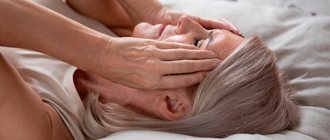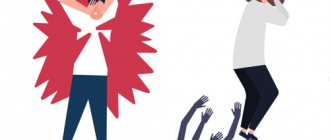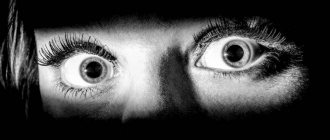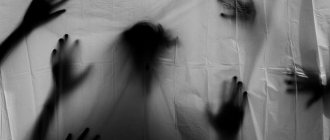Autonomic dysfunction, vegetative-vascular dystonia (VSD, SVD) is not a disease in the scientific sense of the word. However, such a phenomenon exists, occurs quite often and brings considerable suffering to its owners. So what is it? Autonomic dysfunction of the nervous system is a syndrome that has several causes, a complex of symptoms including disturbances in the cardiovascular, respiratory, and digestive systems, psychoneurological disorders, thermoregulation disorders and the formation of neurosis. The mechanism of occurrence of autonomic dysfunction is based on stress and excessive emotional stress against the background of existing somatic and neurological diseases. Other possible causes include alcohol abuse, hormonal imbalances, and some chronic diseases.
The manifestations of autonomic dysfunction are very numerous and individual for each patient. Invariable for establishing the diagnosis in question is the obligatory relationship between the manifestation of symptoms and the psychological state of the patient, his emotional experiences.
Drug treatment
Without the right course of medication, panic attack therapy will not be effective.
The treatment uses sedative-spectrum drugs, tranquilizers, antipsychotics, nootropics, and antidepressants. The goal of drug therapy is to relieve the symptoms of PA for subsequent psychotherapy. When selecting a drug, the doctor takes into account the individual parameters of the patient’s body, possible adverse reactions, lifestyle, and intolerance to certain substances.
Sedative medications
Sedative-spectrum drugs eliminate excessive fatigue and normalize sleep. They normalize the emotional state and activate the body’s defenses to adapt to stress. Tension and irritability are eliminated, the central nervous system is not depressed.
Some sedatives are prescribed for use during the onset of an attack of PA. They have a mild or pronounced hypnotic effect. Sedatives are of natural origin (for example, valerian, motherwort, eleutherococcus).
Tranquilizers
Tranquilizers are aimed at normalizing the heart rate. They relieve tension, but are only relevant when an attack is approaching. Drugs in this group have an increased risk of developing addiction. Their disadvantages are that reactions are slower and the ability to concentrate is slightly impaired.
The tranquilizer relieves the symptoms of PA in a few minutes, but at the same time reduces the excitability of the nervous system. Relevant only for symptomatic therapy, and not constant use every day.
Neuroleptics
For panic disorder at an advanced stage, mild antipsychotics are sometimes prescribed. They relieve the somatic symptoms of panic disorder - reduce sweating, normalize heartbeat and blood pressure. In the absence of psychotherapy, the drug will not provide a lasting effect.
Nootropic drugs
Nootropic drugs improve blood supply and energy metabolism in the brain. Mental activity is stimulated, memory is normalized. Due to the activation of blood circulation, metabolic processes improve. Lecithin, Mexidol or Pyritinol have a positive effect on the quality of sleep and help cope with vegetative-vascular disorders. Defenses are stimulated to adapt to stress.
Antidepressants
For panic disorder, tricyclic and tetracyclic antidepressants are prescribed. The effect is noticeable after 2-3 weeks of use. At the beginning of treatment, the symptoms of PA sometimes become more pronounced, but over time they fade away. 50-60 days is the period in which the maximum effectiveness of antidepressants is observed. The specific drug is selected strictly individually for a specific patient after a thorough diagnosis.
New generation antidepressants have a low risk of addiction and excellent sedative effect.
Vegetovascular dystonia with panic attacks
A panic attack is an episodic manifestation of anxiety that begins suddenly for no apparent reason in patients suffering from VSD. The attacks last from a minute and can last an hour. Sometimes panic attacks occur periodically several times a week, or may not make themselves felt for a long time.
A panic attack during VSD is manifested by extremely pronounced anxiety (panic). It is accompanied by fear of death, self-control, loss of consciousness, fear of going crazy and pronounced vegetative symptoms:
- Increased sweating;
- Accelerated heartbeat;
- Chest pain;
- Nausea;
- Feeling hot or chilly;
- Dizziness;
- Discomfort in the abdomen;
- Trembling hands.
The symptoms of a panic attack can vary from person to person. The attack begins suddenly and lasts from several minutes to several hours. Panic attacks can be associated with a certain situation, environment, place, and arise spontaneously, regardless of external circumstances. The key difference between isolated panic attacks in VSD and panic disorder is the absence of the formation of fear of anticipation of a new panic attack and protective behavior - avoiding situations and places in which a panic attack has already occurred.
Psychotherapy
Good results in the treatment of PA are achieved only with a combination of medication, pharmacotherapy and psychotherapy. The central task of the latter method is to gradually bring the patient to an awareness of the essence of the problem. Other goals of psychotherapy:
- identification and elimination of psychological intrapersonal conflicts;
- modification of previous inappropriate reactions to stress;
- developing healthy patterns and attitudes, attitudes and attitudes for learning mature adaptation mechanisms;
- working with self-control and adequate ways of responding;
- identifying the root causes of pathology.
In the cognitive behavioral approach, a psychotherapist or clinical psychologist teaches the patient techniques to control his own thought process. The client learns to understand his own condition and is able to identify factors that provoke anxiety. The nuances of the lifestyle and rhythm of life are examined.
Psychoanalysis helps to discover the subconscious, underlying causes of PA. Other approaches to the psychotherapy of panic disorder are classical or Ericksonian hypnosis, family consultations, and Gestalt direction. Psychotherapeutic relief of symptoms is the most effective method. Treatment takes from six months to 2-3 years. It takes effort from both the therapist and the patient.
Panic attacks - symptoms and treatment
First aid for a panic attack
A panic attack can be confused with another condition, such as hypoglycemia or myocardial infarction. Therefore, it is better not to risk it and call an ambulance. With a previously established diagnosis, it is advisable to take the patient away from the room or open space where he had a panic attack to another place.
Cognitive behavioral psychotherapy
Most experts agree that a combination of cognitive and behavioral treatments is the best treatment for panic disorder. The first part of therapy is mainly informational; It helps a lot of people to simply understand what panic disorder is and how many others suffer from it. Panic disorder sufferers worry that their panic attacks mean they are "going crazy" or that panicking may cause a heart attack. Cognitive restructuring helps people replace these thoughts with more realistic and positive ones.
In addition, meditation, dietary changes (eliminating caffeine-containing foods, as this can trigger or worsen panic), and aerobic exercise such as running can help treat panic disorder. There is evidence that this releases endorphins and subsequently reduces cortisol (the stress hormone).
When treating panic attacks, a variety of psychotherapeutic approaches and techniques are used, including:
- psychoanalysis;
- classical and Ericksonian hypnosis;
- family psychotherapy;
- Gestalt therapy;
- play therapy;
- switching attention, “grounding” (by tracking and describing your feelings);
- breathing control and muscle relaxation.
The specific method is selected by the doctor individually, based on the factors that provoke anxiety attacks.
Drug treatment for panic attacks
Panic disorder can be effectively treated with a variety of interventions, including psychological therapy and medication.[8]
The effectiveness of cognitive behavioral therapy in combination with medications containing selective serotonin reuptake inhibitors has been confirmed. The term "anxiolytic" has become almost synonymous with benzodiazepines because these compounds have been the drugs of choice for stress anxiety for almost 40 years.
Breathing exercises. In the vast majority of cases, hyperventilation is associated with worsening the consequences of a panic attack. Breathing exercises help balance oxygen and CO2 levels in the blood. One such exercise is 5-2-5. You need to breathe through the diaphragm for 5 seconds. Once the maximum point of inhalation is reached, the breath is held for 2 seconds, then slowly exhaled for more than 5 seconds. This cycle should be repeated twice and then inhaled “normally” for 5 cycles (1 cycle = 1 inhalation + 1 exhalation).
Getting rid of excess stimulants
Patients with panic attacks should adjust their diet to avoid products containing caffeine, as it can cause or worsen panic.
Phytotherapy
Herbal health requires responsible adherence to doctor’s recommendations. Herbal infusions are extracts from plants that relieve the negative symptoms of panic disorder. The method helps to cleanse the body of excess flora and improve metabolism. This is strengthening general well-being, eliminating headaches, migraines, and cardiac disorders. In therapy, herbal teas with a relaxing and calming effect are used. For example, lemon balm and mint slightly neutralize the negative symptoms of panic disorder.
This is a traditional medicine method that should be discussed in consultation with a psychotherapist. The use of herbal medicine alone does not provide long-term results. The advantage of the phytotherapeutic approach is the use of herbal, natural preparations. The technique has virtually no side effects, unlike antidepressants or tranquilizers. Possible contraindications include allergic reactions.
Breathing exercises
Breathing control is important when treating panic attacks. This is a non-drug method that is easy to use at home.
One of the exercise options is to take a very deep breath and hold your breath for as long as possible. After this, exhale slowly. During the exercise, it is recommended to try to relax all parts of the body and close your eyes. The technique must be repeated about 15 times a day.
Due to hyperventilation of the lungs during a panic attack, the gas balance of the blood flow is disrupted. This provokes an increase in anxiety and shortness of breath. During the onset of an attack, it is important to quickly normalize breathing. To do this, it is recommended to breathe through a piece of paper pressed tightly to your nose and mouth or through folded palms. It is necessary that inhalations and exhalations be smooth and slow.
Another technique is diaphragmatic breathing, which reduces anxiety. You can perform the exercise both at home and in a public place. To do this, you need to put one hand on the abdomen, the other on the chest. After this, you need to slowly exhale through your nose until you feel the movement of your stomach. The chest remains at rest. It is advisable to visualize in your head as if the abdominal area is a balloon that you need to try to inflate without moving your chest. Inhale - tense the abdominal muscles - slowly exhale through pursed lips. At first there is a feeling of dizziness, which later goes away.
Physical exercise
Meditation and muscle relaxation are techniques that help you relax and relieve anxiety. These are ways to improve the process of falling asleep, relaxing the mind and body.
The progressive muscle relaxation exercise is carried out as follows. First you need to feel it as much as possible, and then try to tense the muscles throughout your body. First the neck, then the shoulders, palms, feet. Then the tension is released and the muscles relax. Psychotherapists recommend concentrating on the feet first, and then the rest of the body in a higher direction. Attention is paid to every area of the body.
Vegetative-vascular dystonia
VSD is a domestic diagnosis
In our country, the diagnosis of VSD is made very often.
It’s just that there is no such name in the official international list of diseases ICD-10, as well as in scientific articles. But there are many diagnoses that are close in meaning. Due to the isolated development of medicine in our country, VSD, like an umbrella, has covered many diseases that in the West are considered separately. The symptoms of VSD are very different. Many of them are related to the work of the heart:
- pain in the left side of the chest,
- feeling of heaviness in the heart,
- frequent or, conversely, too rare heartbeat,
- arrhythmias at times of emotional stress.
Other symptoms of VSD, sometimes contradictory:
- frequent urination,
- constipation or frequent loose stools,
- severe redness or whitening of the skin,
- blood pressure surges,
- dizziness when standing up suddenly,
- hiccups,
- flatulence,
- dyspnea,
- obsessive cough,
- feeling of lack of air,
- pain throughout the body or in specific organs.
In severe cases, panic attacks occur.
Symptoms of a panic attack : blood pressure rises sharply, a person feels pain in the heart, headache, trembling and agitation. Sometimes there is a feeling of suffocation, the urge to defecate and urinate. All this is accompanied by panic and fear of death, although nothing really threatens life.
There are no symptoms of VSD unique to this diagnosis. Even panic attacks occur with other diseases, such as adrenal tumors, depressive disorders and phobias.
Before making a diagnosis of “vegetative-vascular dystonia”, a neurologist must find out what causes the pain in the organs about which there are complaints. With VSD, everything hurts - the stomach, the heart, and the head. However, tests, MRI, ECG, EEG and other diagnostic procedures do not reveal any organ pathologies.
Causes of VSD
The work of our internal organs is controlled by the autonomic nervous system, which we cannot control consciously. It is divided into two parts - parasympathetic and sympathetic. To put it simply, the first is associated with a state of rest (for example, it stimulates digestion), and the second is more likely to be associated with a state of stress (for example, its activation leads to increased blood supply to the muscles). The nerves of both the sympathetic and parasympathetic nervous systems approach most organs; their signals are often opposite. It is the imbalance between the sympathetic and parasympathetic systems that is meant by the word “dystonia” - a violation of tone.
The development of VSD can also be influenced by various hormonal disorders, and it can also be provoked by stress. This is precisely why this diagnosis is very common among teenagers experiencing hormonal changes and constantly worrying about various reasons. In addition, it happens that “vegetative-vascular dystonia” in a teenager’s medical record is just an unsubscribe, meaning that the complaints of the young patient (or his parents) have been heard, there are no serious illnesses and all that remains is to wait until the age of 18–20, when the hormones begin to play more quietly and everything will return to normal on its own.
TAKE THE TEST: ARE YOU PROMOTED TO PANIC ATTACKS?
Treatment of VSD
In general, the course of treatment for VSD depends on the specific symptoms. If vegetative-vascular dystonia has worsened due to stress, it is recommended first of all to eliminate the emotional problem: take a vacation, change jobs, resolve conflicts in the family. Often it is impossible to do without a course of psychotherapy; for serious problems, the doctor may prescribe anxiolytics or antidepressants to treat VSD . In order to generally improve the condition, breathing exercises, physical therapy, and massage are recommended.
If you do not have panic attacks and the disease does not interfere with your life, you can simply adapt to VSD. The main way to treat VSD is a healthy lifestyle. If you get into the habit of hardening, regular exercise, walks in the fresh air and a balanced diet, over time you can completely forget about your diagnosis.
At the same time, VSD can be a symptom of a “real” disease that should not be started. These include osteochondrosis, diabetes mellitus, atherosclerosis, and thyroid disease. Therefore, you definitely need to ask the neurologist in detail why he diagnosed you with VSD, and do not skimp on additional examinations, especially if you have a hereditary predisposition to the above ailments.
Expert opinion
Kristina Semina, neurologist at the Meditsina clinic:
– There are a lot of people diagnosed with vegetative-vascular dystonia . The development and course of the disease is influenced by lifestyle, economic problems, psychological stability in the family and at work, and sleep disorders.
The most serious problem with VSD is panic attacks . First of all, psychotherapists teach how to cope with them. There are psychotherapeutic methods for relieving panic attacks without medications. This is an impact on emotions that helps a person find a solution to a problem himself. If this method does not bring any effect, a neurologist takes over the treatment.
Author: Ksenia Khudyakova Published: March 15, 2016
Is it possible to overcome forever
To overcome panic disorder forever, long-term work with a psychotherapist, taking a course of medications, and the patient’s efforts are required. It is important to find the root cause of anxiety - it is often hidden deep in the subconscious. Next, you need to learn how to independently smooth out the symptoms during an attack.
The nuances of therapy depend on the severity of the disorder, its duration, severity and personal characteristics of the body. It is believed that the most severe PAs occur in those patients who perceived the first attack as a fatal catastrophe. The sooner treatment begins, the faster and easier it will be. Full recovery occurs in the presence of two factors - a competent treatment regimen and a lot of effort from the patient.
Consequences
Panic disorder, if the diagnosis is correct, does not go away “on its own.” Sometimes the intervals between attacks are quite long - up to 1-3 months. But without adequate treatment, the time interval between attacks gradually decreases.
Looking at panic attacks separately, researchers conclude that they do not pose a threat to life. But repeated PA without treatment will lead to the formation of depressive disorder, phobias, and neurosis. Over time, a person becomes a hypochondriac, stress resistance suffers, and increased suspiciousness arises.
Letting a disorder take its course is a health hazard. After a few months, the quality of life decreases noticeably. Mental and physical capabilities decline, and performance suffers. People who do not treat mental problems have problems in the area of social adaptation.








